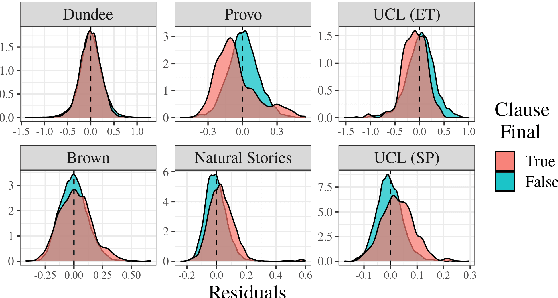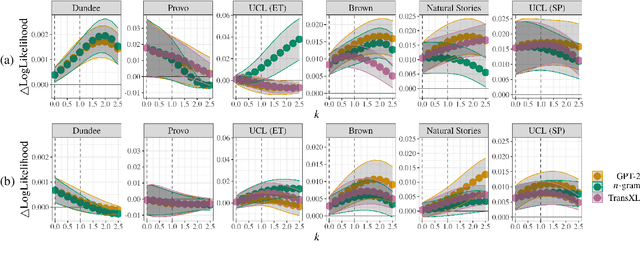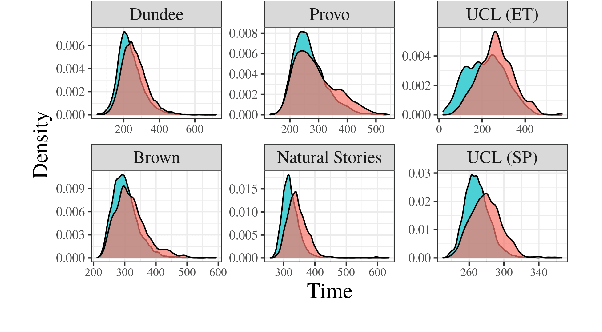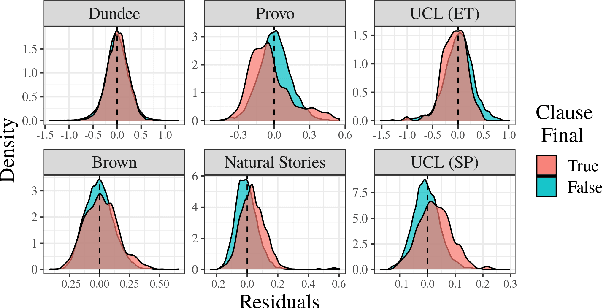Thomas Hikaru Clark
MIT
A Cross-Linguistic Pressure for Uniform Information Density in Word Order
Jun 06, 2023Abstract:While natural languages differ widely in both canonical word order and word order flexibility, their word orders still follow shared cross-linguistic statistical patterns, often attributed to functional pressures. In the effort to identify these pressures, prior work has compared real and counterfactual word orders. Yet one functional pressure has been overlooked in such investigations: the uniform information density (UID) hypothesis, which holds that information should be spread evenly throughout an utterance. Here, we ask whether a pressure for UID may have influenced word order patterns cross-linguistically. To this end, we use computational models to test whether real orders lead to greater information uniformity than counterfactual orders. In our empirical study of 10 typologically diverse languages, we find that: (i) among SVO languages, real word orders consistently have greater uniformity than reverse word orders, and (ii) only linguistically implausible counterfactual orders consistently exceed the uniformity of real orders. These findings are compatible with a pressure for information uniformity in the development and usage of natural languages.
Analyzing Wrap-Up Effects through an Information-Theoretic Lens
Mar 31, 2022



Abstract:Numerous analyses of reading time (RT) data have been implemented -- all in an effort to better understand the cognitive processes driving reading comprehension. However, data measured on words at the end of a sentence -- or even at the end of a clause -- is often omitted due to the confounding factors introduced by so-called "wrap-up effects," which manifests as a skewed distribution of RTs for these words. Consequently, the understanding of the cognitive processes that might be involved in these wrap-up effects is limited. In this work, we attempt to learn more about these processes by examining the relationship between wrap-up effects and information-theoretic quantities, such as word and context surprisals. We find that the distribution of information in prior contexts is often predictive of sentence- and clause-final RTs (while not of sentence-medial RTs). This lends support to several prior hypotheses about the processes involved in wrap-up effects.
Mixture-of-Partitions: Infusing Large Biomedical Knowledge Graphs into BERT
Sep 10, 2021



Abstract:Infusing factual knowledge into pre-trained models is fundamental for many knowledge-intensive tasks. In this paper, we proposed Mixture-of-Partitions (MoP), an infusion approach that can handle a very large knowledge graph (KG) by partitioning it into smaller sub-graphs and infusing their specific knowledge into various BERT models using lightweight adapters. To leverage the overall factual knowledge for a target task, these sub-graph adapters are further fine-tuned along with the underlying BERT through a mixture layer. We evaluate our MoP with three biomedical BERTs (SciBERT, BioBERT, PubmedBERT) on six downstream tasks (inc. NLI, QA, Classification), and the results show that our MoP consistently enhances the underlying BERTs in task performance, and achieves new SOTA performances on five evaluated datasets.
 Add to Chrome
Add to Chrome Add to Firefox
Add to Firefox Add to Edge
Add to Edge